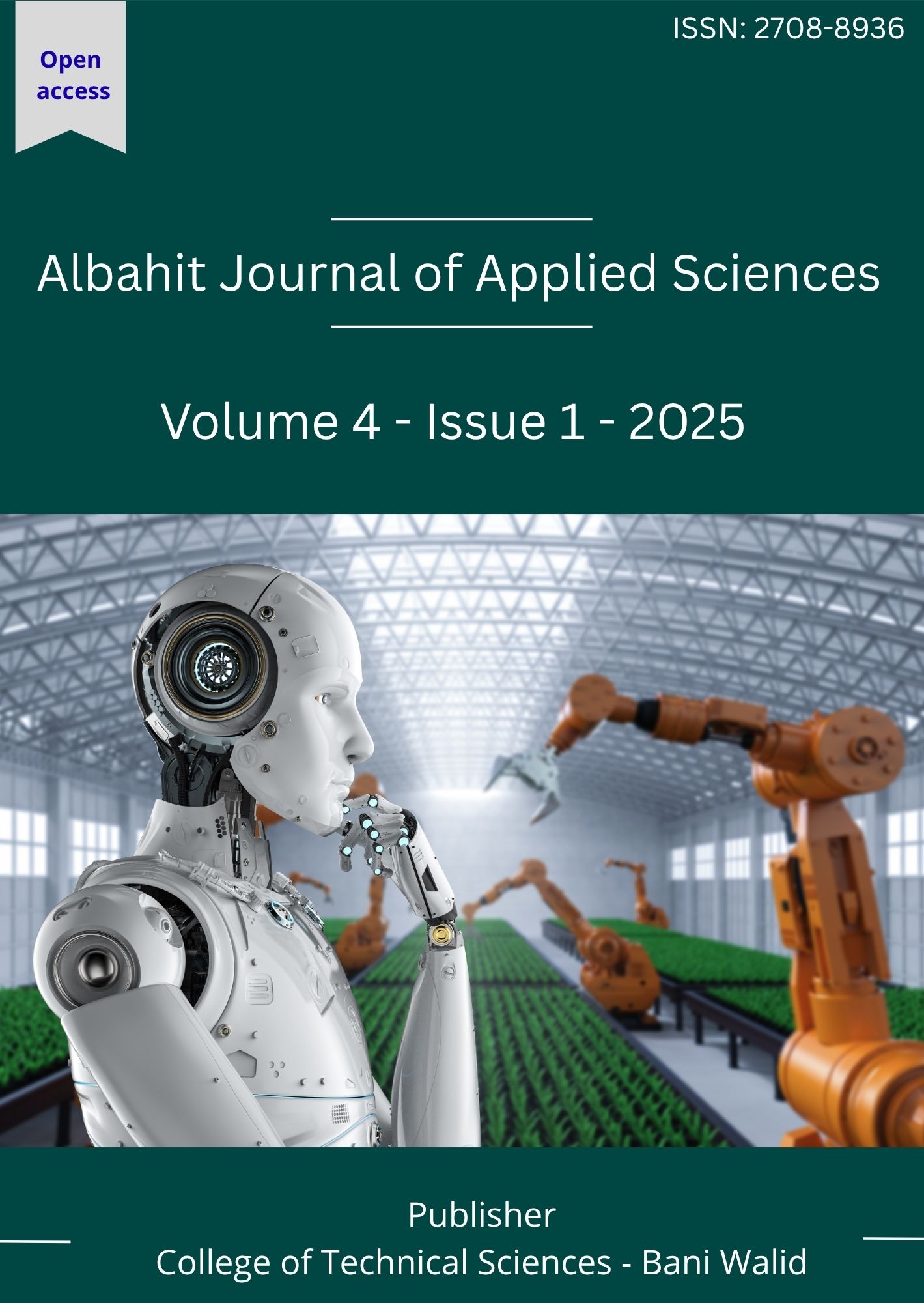Determinants of Bank Credit Restrictions in Rural Areas - An Applied Study of the Central Region of Libya
الكلمات المفتاحية:
banking credit، sociol-economic characteristics of households، central region، Libyaالملخص
The high level of risk in rural areas and the lack of information infrastructure suggest that rural credit markets in developing countries are likely to experience structural dysfunction. As a result, the majority of farmers, herders, and rural residents face binding credit constraints. Although there is a general perception that rural financial markets perform poorly, relatively little empirical evidence exists regarding the factors driving such conditions and the impact of credit constraints on agricultural productivity. The primary objective of this study is to examine whether households in the Libyan study area face credit constraints, using a direct elicitation approach based on a structured questionnaire survey. A randomly selected sample was drawn from the study area, which was divided into three regions. Households were classified as either constrained or unconstrained, and a binary probability model (Probit Model) was applied to test the sociol-economic characteristics of rural households. The analysis identifies whether credit constraints stem from loan quantity, interest rates, or other sociol-economic variables. The methodological approach combines observable outcomes with qualitative survey questions, relying on primary data collected through a field survey in the central region of Libya, stretching from Abu Qurayn in the west to Bin Jawad in the east, and also including the Al-Jufrah area in south-central Libya. Findings from the Probit model indicate that more than 55% of Libyan households in the study area are unable to access credit from formal banks or obtain financial facilities from any other source. The most significant barriers to accessing banking credit services were the existence of interest (riba), lack of collateral, and low income. For farmers in particular, farm size, soil quality, and access to a permanent water source were determining factors. The availability of a permanent water source increased the likelihood of obtaining loans from banks. Conversely, the refusal to apply for loans involving interest rates strongly discouraged participation in credit services, as the prohibition of interest was the most direct factor limiting households’ willingness to apply for such services, despite their acute need. Furthermore, the study found a correlation between household heads engaged in livestock rearing, their level of education, and the ownership of other assets, which increased the probability of applying for credit services from various banks.
المراجع
1. النشرة الاقتصادية للمصرف ليبيا المركزي للسنوات 20214-2025.
2. وزارة المالية بحكومة الوحدة الوطنية تقرير الإفصاح الشفافية 2022.
3. مجلس التخطيط الوطني – رؤية 2030. – مجلس النواب الليبي.
4. مجلس التخطيط الوطني رؤية 2040. – مجلس النواب الليبي.
5. منظمة الأغذية و الزراعة (2012). (FAO). البيانات الإحصائية للقطاع الزراعي 1980 -2012.
6. Binswanger, H. (1995). The Role of Credit in Rural Development. World Bank Papers.
7. Barham, B. L., S. Boucher, and M. R. Carter, (1996). Credit Constraints, Credit Unions, and Small-Scale Producers in Guatemala. World Development 24 (5):793-806.
8. Diagne, A., & Zeller, M. (2001). Access to Credit and Its Impact on Welfare. IFPRI Discussion Paper. Jaffee, D., & Stiglitz, J. (1990). Credit Rationing in Markets with Imperfect Information. American Economic Review.
9. Diagne, Aliou. Zeller, Manfred and M, Sharma, (2000). Empirical Measurements of Households Access to Credit and Credit Constraints in Developing Countries: Methodological Issues and Evidence. Discussion Paper No 90/2000. Washington DC, USA: International Food Policy Research Institute (IFPRI). Food Consumption and Nutrition Division (FCND).
10. Jaffee and Stiglitz. (1990). Credit Rationing. In: B. Friedman and F. Hahn, Editors, Handbook of Monetary Economics, North Holland, Amsterdam, 1990.
11. Jappelli, T, (1990). Who is Credit Constrained in the US? Quarterly Journal of Economics, 219-234.
12. Leather, D. Howard, (1990). Evidence on Credit Rationing and the Effects of Credit on Farm Output. American Journal of Agricultural Economics, August, 1990. 782-783
13. MF, International Monetary Fund, (2003). The Socialist People’s Libyan Arab Jamahiriya; Country report No 03/327. Washington, D, C. Internet: www.imf.org.
14. Stiglitz, J. E, and Weiss A. 1981: Credit Rationing in Markets with Imperfect Information. The American Economic Review 71 (3): 393-410.







